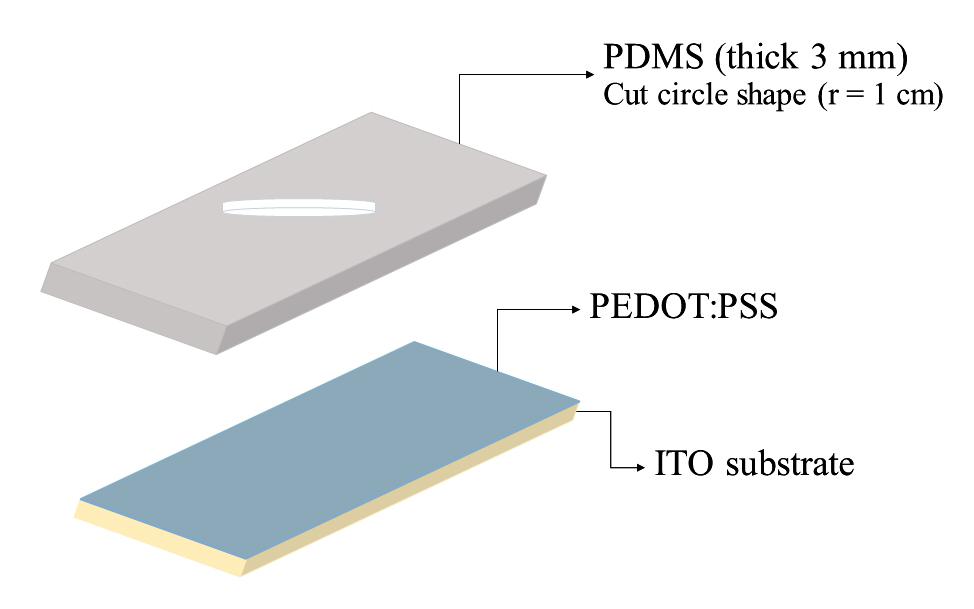Study of Electrochromic Properties of PEDOT:PSS for Tunable Filter Optics with Lithium Salt Electrolyte
DOI:
https://doi.org/10.48048/siam.2024.67003Abstract
Nowadays, conductive polymers based on poly(3,4-ethylenedioxythiophene), poly(styrene sulfonic acid), or PEDOT:PSS, have been employed as a flexible and transparent coating in various significant electronic applications. With the demand for electrochromic properties, such as in electronic displays, further research into its electrooptic properties is required, especially the systematic understanding to obtain the optimized switching. Our research investigates the electrooptic properties of the PEDOT:PSS film, particularly the refractive index changing under various applied biases. The electrochromic device is prepared in a simple fashion, and the electroactive layer of PEDOT:PSS thickness is defined via spin-coating between two indium tin oxide (ITO) substrates. To increase the switching properties of PEDOT:PSS, lithium perchlorate (LiClO4) was prepared in acetonitrile, as the electrolyte in varied concentrations of 1.195 M, 1.5 M, and 2.0 M, respectively. A potential voltage of -4.0 V to 0.0 V is utilized to study the device's electrochromic properties with the step 5 mV/s continuously. Finally, the optical properties are characterized using the spectroscopy method based on real-time measurement of the transmission spectrum and transmission matrix calculations. The change in visible light absorption, transmission, and film color is recorded under a switching cycle that shows consistent behavior. This allows the further utilization of such a hybrid structure for possible tunable filter applications.
Keywords: Electrochromic, PEDOT:PSS, Optical, Lithium salt, Electrolyte






